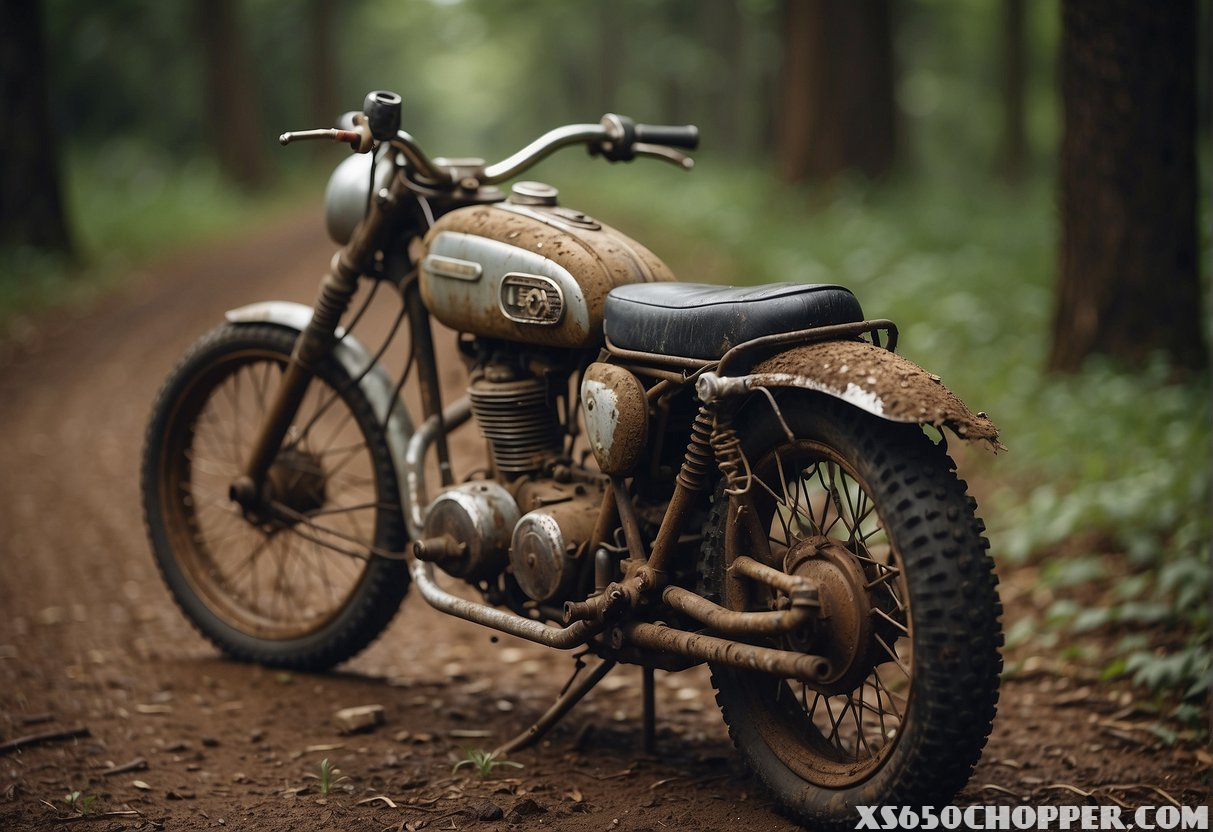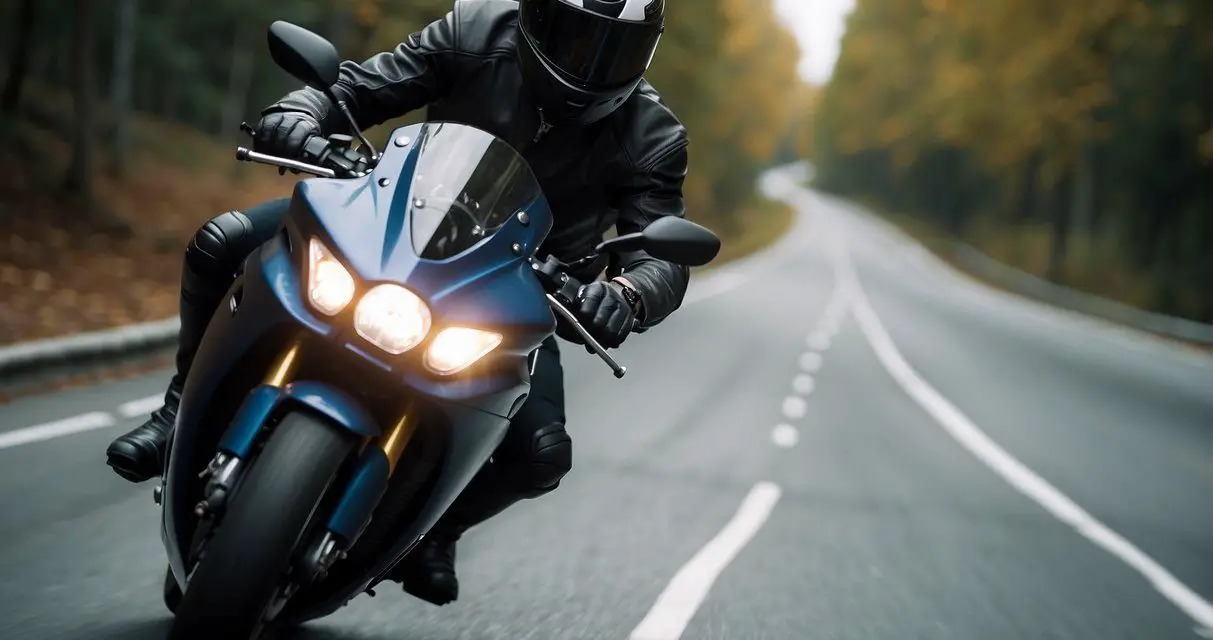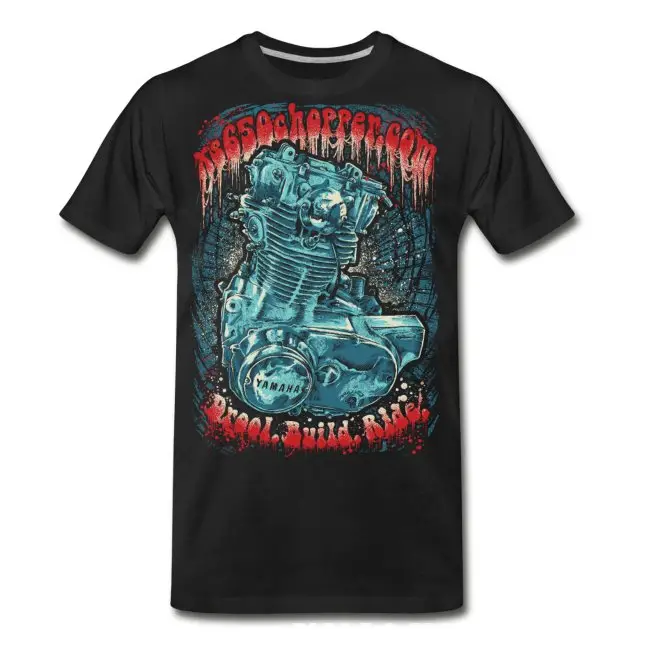Beginning your journey on two wheels can be exhilarating, offering a sense of freedom that’s hard to find elsewhere. However, with this new adventure comes a learning curve that every motorcycle rider must navigate. As you gear up and set out on the open road, being aware of common pitfalls can help ensure not only your safety but also your enjoyment as you become one with your machine.
With enthusiasm running high, it’s easy to overlook some of the finer points of motorcycle riding. Here’s 9 mistakes beginners make:
1. Ignoring Your Skill Level
When you’re starting out, recognizing your skill level is crucial. As a new rider, it’s easy to overestimate your abilities, which can lead to dangerous situations on the road. Here are key points to remember to avoid this mistake:
- Take it Slow: Begin with a motorcycle that matches your current experience level. Opting for a bike that’s too powerful can be overwhelming and unsafe.
- Motorcycle Safety Courses: Enroll in a safety course to sharpen your skills. Courses are beneficial for building confidence and understanding road etiquette.
- Practice Regularly: The more you ride, the better you’ll get. Regular practice in a variety of conditions helps improve your reaction times and handling.
- Ride Within Limits: Don’t push yourself to keep up with more experienced riders or rush into complex maneuvers like lane splitting before you’re ready.
Remember, there’s always something new to learn, regardless of your current level. By acknowledging your skill limitations and striving to improve at a comfortable pace, you will enjoy a safer and more rewarding riding experience.
2. Neglecting Regular Maintenance

When you’re enjoying the thrills of riding, it’s easy to forget about the less exciting aspect of motorcycle ownership: maintenance. However, regular check-ups and maintenance work are vital to both your safety and the longevity of your bike.
Oil and Filter Changes: Just like a car, your motorcycle needs regular oil and filter changes. Old oil can lead to engine damage and decreased performance. Manufacturers often recommend an oil change every few thousand miles, but check your bike’s manual for the specific intervals.
Tire Pressure and Tread: Riding on tires with incorrect pressure can affect your motorcycle’s handling and reduce the tires’ lifespan. Moreover, worn tread depth increases your risk of slipping, especially on wet surfaces. Before every ride, take a moment to check your tire pressure and tread.
Brake Pads: Worn brake pads lead to reduced stopping power, which could be dangerous in an emergency. Make a habit of inspecting your brake pads’ thickness regularly.
Chain Tension and Lubrication: An improperly tensioned or unlubricated chain can cause poor performance or even snap while you’re riding. Ensure you regularly lubricate the chain and adjust it to the manufacturer’s recommended tension.
Lights and Signals: Your lights and turn signals are your primary means of communicating with other road users. Always check that they’re functioning correctly to avoid miscommunication that could lead to accidents.
3. Skipping Pre-Ride Inspections
Neglecting to perform a pre-ride inspection on your motorcycle can significantly increase the risk of malfunctions and accidents. As a new rider, it’s vital to check your bike’s condition before hitting the road.
Essential checks to include are:
- Tires: Examine for adequate tread depth and any signs of wear or damage. Ensure they are inflated to the correct pressure.
- Brakes: Test the front and rear brakes for responsiveness. This may involve checking the brake pad thickness and fluid levels.
- Lights and Horn: Confirm that the headlights, brake lights, turn signals, and horn are all functioning properly. A quick test can save you from visibility issues on the road.
- Fluids: Look over oil and coolant levels to prevent overheating and engine damage.
- Chains and Belts: Check for correct tension and any signs of wear.
Remember:
| Don’t Ignore | Why It Matters |
|---|---|
| Loose Bolts | Can lead to parts falling off mid-ride. |
| Leaks | Indicate potential failure of seals or gaskets. |
| Strange Noises | Usually a sign something isn’t functioning right. |
By taking just a few minutes for a pre-ride inspection, you ensure your motorcycle is roadworthy and safe. This habit not only protects you but also prolongs the life of your motorcycle.
4. Riding Beyond Your Limits

When you’re enthusiastic about motorcycle riding, it’s tempting to push boundaries and test your skills. However, riding beyond your limits is a mistake that can lead to accidents and injuries. As a beginner, it’s crucial to recognize and respect your current skill level and ride accordingly.
Here’s how you can avoid this common pitfall:
- Know Your Skills: Be honest with yourself about your riding abilities. Stick to speeds and roads that you feel comfortable navigating.
- Progress Gradually: Increase the difficulty of your rides bit by bit. If you’re comfortable on city streets, try a country road next, before hitting the highway.
- Take a Course: Formal training can help. Courses offer a safe environment to learn and practice new skills.
- Listen to Your Instincts: If you feel uneasy about a particular maneuver or route, it probably means you’re not ready. Trust your gut feeling.
Remember, there’s no rush in becoming an expert rider. Taking your time to build confidence is the safest way to improve. It’s also one of the most common advice given by experienced riders. Patience and steady progress are your best friends on the road to mastering motorcycle riding.
5. Not Wearing Proper Gear
When you’re about to take on the world of motorcycling, it’s crucial to understand the importance of riding gear. Neglecting personal protective equipment is a mistake you can’t afford to make.
- Helmet: Your most vital piece of equipment. Make sure it’s DOT-approved and fits correctly.
- Jacket and Pants: Opt for abrasion-resistant materials to protect your skin.
- Gloves: They’ll guard your hands against injury and improve grip.
- Boots: Go for over-the-ankle boots that protect your feet and shins.
It’s tempting to skip out on gear, especially on short rides or hot days, but remember that mishaps aren’t weather-dependent. Wearing proper riding gear is not just a safety essential, it’s also a comfort enhancer. Quality gear can shield you from the elements and reduce fatigue.
Your gear is as much a part of your ride as your motorcycle. Every item serves a purpose, be it a reinforced jacket protecting your torso or gloves keeping your fingers nimble for the controls. Make no exceptions for your safety; gear up every single time you ride.
6. Overloading Your Bike
When you load up your bike for a ride, it’s crucial to consider the weight limit. Overloading can lead to numerous problems that compromise your safety and the functionality of your motorcycle.
Balance and Handling
- Excess weight affects balance, making your bike less responsive.
- Handling becomes more difficult, raising the risk of accidents.
Wear and Tear
- Overburdening your bike strains the suspension and brakes.
- Tires can also wear out quicker, leading to potential blowouts.
Fuel Efficiency
- A loaded bike works harder, reducing fuel economy significantly.
Here’s a simple guide to avoid overloading:
- Check the Manual: Find your bike’s weight limit.
- Pack Smart: Use saddlebags evenly and secure loose items.
- Regular Checks: Especially on long trips, reassess your load frequently.
Remember, safety should be your top priority. Happy riding!
7. Lack of Visibility
Being less noticeable on the road can increase the risk of accidents. Your motorcycle’s smaller size means it’s crucial for you to enhance your visibility while riding.
- Bright clothing: Wear gear that stands out. Brightly colored helmets and jackets can catch a driver’s eye.
- Reflective materials: Use reflective tape on your gear and bike. They shine brightly in car headlights.
You might consider upgrading your motorcycle’s lighting. LED lights make your bike more visible, and additional accessories like reflective decals can also help.
Ride timing matters as well. During dusk or dawn, your visibility drops. Plan your rides when sunlight is optimal.
Don’t forget about your signaling. Always use your turn signals to indicate your intentions on the road. This simple act can be vital in preventing misunderstandings with other motorists.
Your positioning on the road is also key. Avoid riding in blind spots, and stay where you can be seen. Remember, making eye contact with drivers is a good way to ensure they’ve seen you.
Keep in mind, enhancing visibility is a combination of what you wear, how you equip your bike, and the way you navigate traffic. Stay bright; stay safe.
8. Improper Braking
When you’re riding a motorcycle, understanding the right way to apply brakes is crucial. Remember, your bike has two brakes: one at the front wheel, typically the most powerful, and another at the rear.
Front Braking: To brake safely, use the front brake with firm, progressive pressure. Squeezing it too abruptly can cause the bike to become unstable or even flip over.
Rear Braking: On the other hand, over-relying on your rear brake can lead to skidding. Skidding reduces your control over the motorcycle and can result in a crash. Use the rear brake in conjunction with the front, but do not stomp on it.
Know Your Brakes:
- Front brake: 70-90% braking power
- Rear brake: 10-30% braking power
Braking Technique:
- Apply both brakes simultaneously
- Start with gentle pressure on the front brake
- Increase pressure steadily, avoid slamming
When you’re in a corner, braking requires extra care. Gently apply the brakes before entering the turn, not while you’re in the midst of it. This helps maintain balance and prevent a slide-out. Practice your braking techniques in a controlled environment to gain confidence. Remember, smooth and controlled braking ensures a safer ride. For more detailed guidance, you might explore advice from expert riders about the biggest mistakes new motorcycle riders make.
9. Not Washing the Bike Regularly

Regular bike maintenance is more than just keeping your motorcycle in good mechanical condition; its cleanliness is also essential. If you don’t wash your bike regularly, you’ll allow dirt, grime, and pollutants to accumulate. Over time, these can corrode metal parts and affect the paint.
- Preparation is Key: Before you start, gather all your supplies such as a bucket, mild soap, and microfiber towels. Make sure to park your bike in a shaded area to prevent the soap from drying too quickly and leaving residue.
- Rinsing: Always give your bike a thorough rinse before applying soap. This step ensures that you’re not rubbing abrasive particles against the paint during the wash, which can lead to scratches.
When you’re washing your motorcycle, avoid using high-pressure jets on bearings or seals as this could push water into areas where it can cause damage. Pay attention to the nooks and crannies where water can be trapped, as this could lead to rust.
For drying, use a clean microfiber towel or a chamois. Air drying could leave water spots or allow trapped water to start the corrosion process.
Remember, your motorcycle isn’t just a mode of transportation; it’s an investment. By keeping it clean, you’re not only proud of its appearance but also protecting that investment from potentially costly damage related to neglect. So, next time you consider skipping the wash, remember that cleanliness extends past aesthetics – it’s a vital part of your bike’s upkeep.








